Cerys Jones, an undergraduate Media student, volunteered with the Missionaries of Charity in India for a little over a month. Read below part one of two sharing her account.
I am grateful for the incredible opportunity to have volunteered for six weeks during the summer in the unique city of Kolkata. One of India’s largest cities, this bustling, chaotic and magical metropolis is located in the state of West Bengal.
I came here to volunteer with the Missionaries of Charity organisation, a social care charity and religious order founded by Mother Teresa in 1950. Since then, this order’s nuns, staff and volunteers have been serving the city’s poorest and most vulnerable inhabitants, ranging from widows and orphans to those suffering from incurable disease and social exclusion, for example leprosy and HIV/ Aids patients. This organisation works tirelessly to improve living conditions for people in Kolkata, and has grown into an international movement seeking social justice and caring for the poorest of the poor. The Missionaries of Charity run homes in over 133 countries, but its first home was founded here in Kolkata by Mother Teresa.
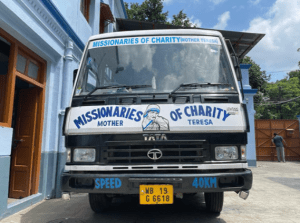
I had heard of this work by word of mouth, and had the opportunity to volunteer in one of their orphanages here one year ago. This summer, I was given the choice to work in a variety of different homes and projects, and decided to commit to two in particular: Shanti
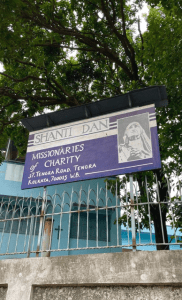 Dan, a home providing lifelong care for mentally and physically disabled women from economically disadvantaged backgrounds, and Nirmal Hriday, the charity’s first ever home, which provides palliative care for homeless, elderly and dying patients rescued from the streets. The poverty and destitution in this city are shocking, especially to the Western eye, but the response work carried out by this organisation is just as inspiring. As a volunteer in both homes, I was expected to complete a range of tasks, including laundry, cleaning, dressing, changing, and taking patients to the toilet, feeding patients, assisting in physiotherapy and administering medications, teaching basic language and maths skills, and above all providing a caring presence and listening ear. Most of the patients in these homes come from marginalized backgrounds or are stigmatized due to their conditions, so often what they need most is to be heard, to be treated with dignity and respect. This is possibly the most important aspect of our role as volunteers.
Dan, a home providing lifelong care for mentally and physically disabled women from economically disadvantaged backgrounds, and Nirmal Hriday, the charity’s first ever home, which provides palliative care for homeless, elderly and dying patients rescued from the streets. The poverty and destitution in this city are shocking, especially to the Western eye, but the response work carried out by this organisation is just as inspiring. As a volunteer in both homes, I was expected to complete a range of tasks, including laundry, cleaning, dressing, changing, and taking patients to the toilet, feeding patients, assisting in physiotherapy and administering medications, teaching basic language and maths skills, and above all providing a caring presence and listening ear. Most of the patients in these homes come from marginalized backgrounds or are stigmatized due to their conditions, so often what they need most is to be heard, to be treated with dignity and respect. This is possibly the most important aspect of our role as volunteers.
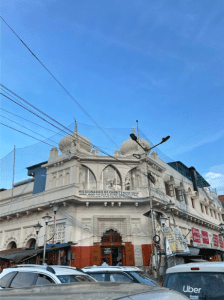
Nirmal Hriday Home for the Dying Destitute
I find it almost impossible to boil down my experience here to a few highlights, but what I appreciated the most was the privilege to be able to collaborate with such inspiring people. The nuns in charge are pillars of kindness and selflessness. They work tirelessly day and night to care for society’s most vulnerable. Despite their catholic convictions, they welcome patients from all backgrounds into their homes, and are open to work with volunteers from all faiths and walks of life. The homes also employ staff, affectionately known as ‘Massee’s (‘auntie’ in Bengali), and of course international volunteers hailing from every corner of the globe. Within a few weeks, I had made friends from India, Japan, Mexico, Chile, France, and Spain. And of course, the patients themselves continued to inspire me every day by their courage and willingness to carry on despite suffering from extremely painful circumstances. The women’s joy and good humour would uplift me, whether that was when spoon feeding an elderly woman, or washing dishes or assisting my wheelchair bound friend to the bathroom. Engaging with such beautiful, humble people and connecting over our shared humanity despite cultural differences, was a truly enriching experience which will stay with me for the rest of my life.
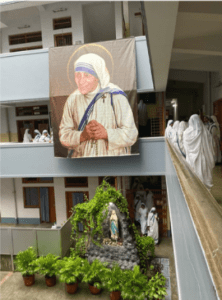
Missionaries of Charity Headquarters
No two days are ever same in this role, and with each morning came new surprises. In general though, each day would begin with a shared breakfast at the Missionaries of Charity headquarters, followed by a time of prayer and thanksgiving. This created a strong sense of community between the volunteers. Following this we would make our way to our respective homes, either by foot or local bus. In the morning I worked in Shanti Dan, the home for mentally/ physically disabled women. This time was also punctuated by an obligatory ‘tea time’ around 10 am, which involved freshly brewed Indian chai.
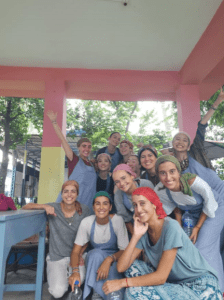
Volunteers’ photo at tea time!
After lunch break, most days I would travel to the south of the city to visit the Nirmal Hriday home, to work with the elderly and dying patients. During this time I spent a lot of time speaking and learning from the patients. Despite the morbid description of this home, I was continually inspired by the strength and resilience of these women. Suffering from unimaginable physical and mental illnesses (ranging from life threatening infections and cancers to trauma and schizophrenia), and utterly marginalized from society (women who stay in this home have been abandoned by their families and are rescued from the streets), the patients continue to smile and laugh and find joy in the simplest of moments. A song sang or a piece of food shared created a bond of trust and friendship between us. I was touched that these women would trust me in their most vulnerable state.